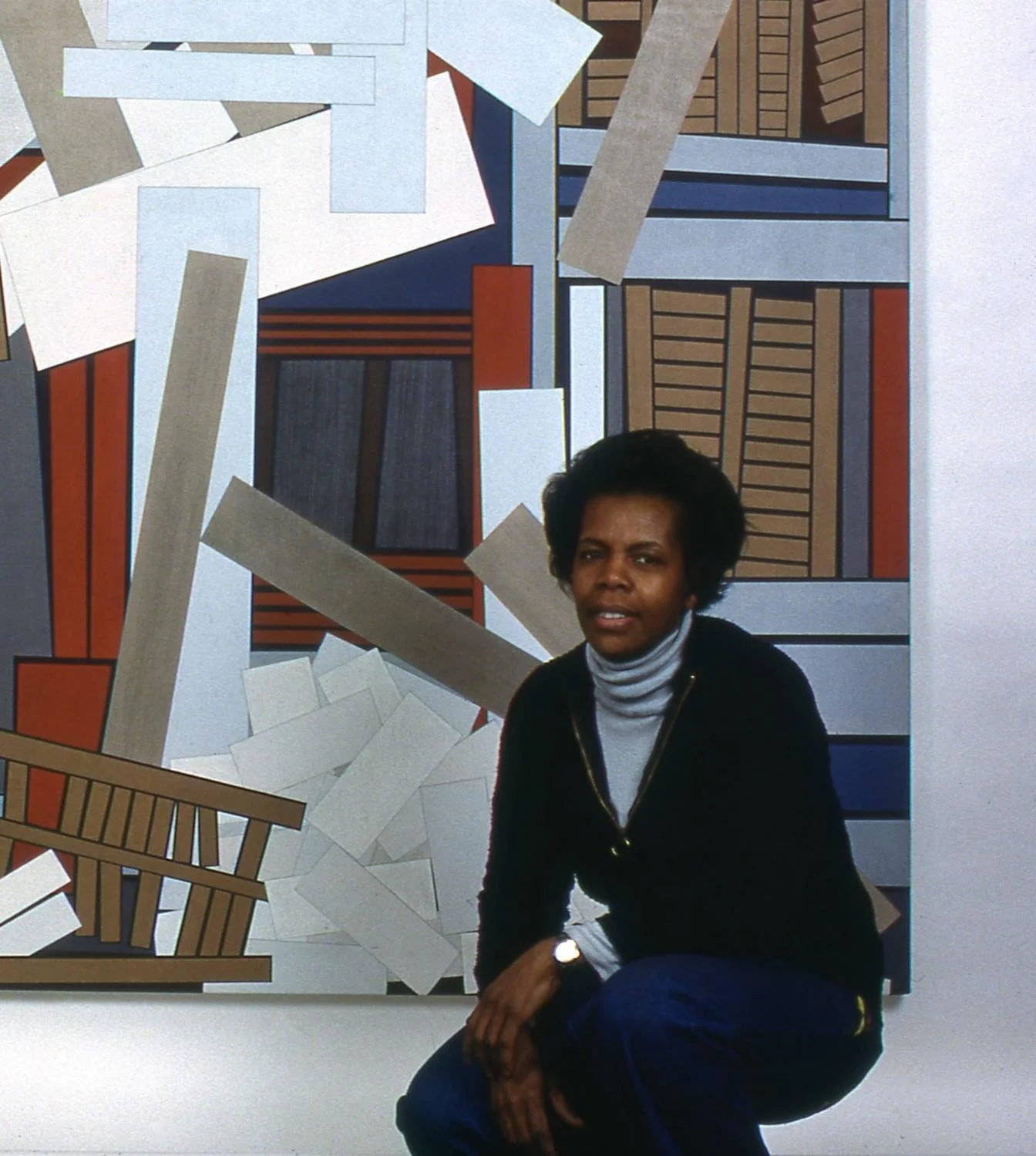
Mavis
Pusey
(1928-2019)
untitled, New Year
1975-1976
lithograph
5-1/2 x 11 inches (image), full margins
signed, numbered 16/35, and inscribed in pencil verso: I wish that 1976 will be one of your very best years, Mavis.

“I am inspired by the energy and the beat of the construction and demolition of these buildings. The tempo and movement mold into a synthesis and, for me, become another aesthetic of abstraction. I use color and texture to convey the tension that is the heartbeat of the city… I see the new construction as a rebirth, a catalyst for a new environment, and since the past must be a link to the future, in each of my works…. there is a circle to depict the never-ending continuation of natural order and all matter.”
Photo: Collection of the Studio Museum in Harlem, Mavis Pusey archive
Mavis Pusey was born in Retreat, Jamaica, in 1928 and came to New York City in 1958, initially to study fashion design and later to pursue fine art. As a child, an aunt taught her to sew, and her first job was cutting fabric in a garment factory in Kingston, Jamaica. It was an easy decision for her to study at the Traphagen School of Fashion. However, due to financial constraints, she began attending classes at the Art Students League instead, where she studied painting and printmaking with Will Barnet and Harry Sternberg, respectively, over the next four years.
When her student visa expired, Pusey became a world nomad. She went to London, and then Paris, where her first solo exhibition was held at Galerie Louis Soulanges in 1968. When she returned to NY, her work "Dejyqea" (oil/canvas, 72 x 60 in.) was included in the important exhibition "Contemporary Black Artists in America," held in 1971 at the Whitney Museum of American Art, NY. She worked with Robert Blackburn at his workshop for three years and was struck by the energy and constant movement of the city. Many of her prints from this period reflect a focused interest on the city's construction.
Pusey also taught at various institutions throughout her career, including Rutgers University and the New School for Social Research. She moved to Virginia later in her career.
In 2017, her work was featured in the exhibition "Magnetic Fields: Expanding American Abstraction, 1960s to Today." It was the first U.S. presentation dedicated exclusively to the formal and historical dialogue of abstraction by women artists of color.
Since her death, she has garnered considerable attention from museums and curators. Pusey was included in the Whitney Biennial 2024 in New York, marking a high-profile reintroduction to a broad audience. In 2025, the Institute of Contemporary Art, Philadelphia, opened Mavis Pusey: Mobile Images, the artist's first major museum survey (on view July 12–Dec 7, 2025), with a planned presentation at the Studio Museum in Harlem in 2027. Notably, MoMA holds her 1968 screenprint Frozen Vibration, underscoring her institutional appeal.
Selected Exhibitions
Galerie Louis Soulanges, Paris, FR (first solo), 1968
Contemporary Black Artists in America, Whitney Museum of American Art, 1971
Inaugural exhibition at the National Museum of African American History and Culture (NMAAHC), Washington, D.C., 2016.
Magnetic Fields: Expanding American Abstraction, 1960s to Today, Kemper Museum of Contemporary Art, Kansas City, MO, 2017 (traveling)
Whitney Biennial 2024, NY, Even Better Than the Real Thing
Mavis Pusey: Mobile Images, ICA Philadelphia, 2025